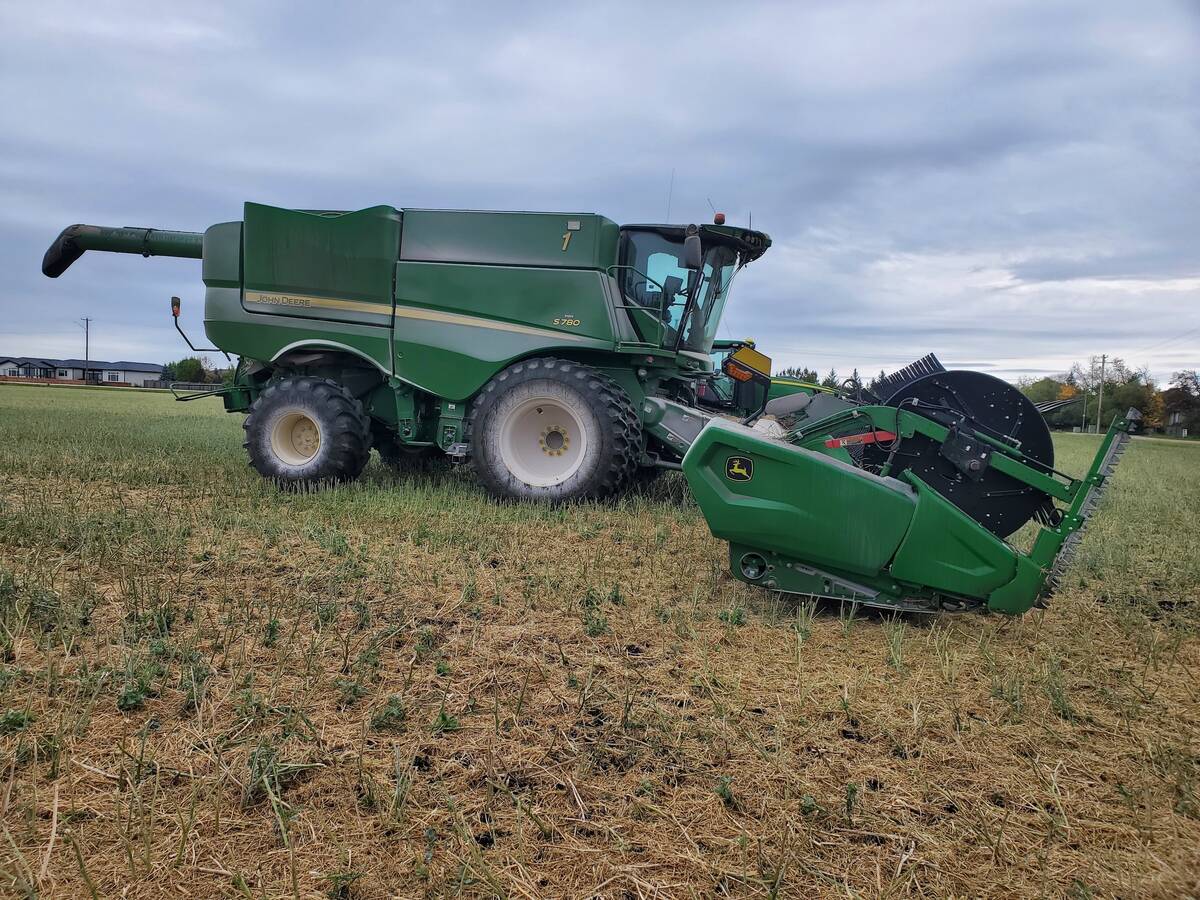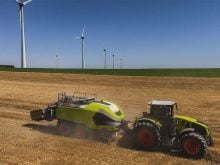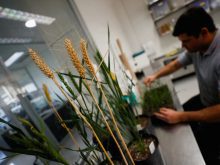Ron Gale has a sheep theory. If two teats are good on a ewe, four must be better.
A sheep with four teats should be able to raise twice as many lambs, cutting the cost of production in half.
The Sundre, Alta.-area farmer is so convinced of the benefits of the four-nippled sheep that he has spent 12 years breeding his own sheep.
The classic Bergen sheep is white with black nose and hoofs, good wool and milking ability, as well as four teats.
Read Also

Powdery mildew can be combine fire risk
Dust from powdery mildew can cause fires in combines.
“We want a big wool and meat sheep. It’s a big white ewe that can raise four lambs,” said Gale, who named the sheep after the Bergen area where he lives, south of Sundre in western Alberta.
All four teats must produce milk, which will enable the ewe to raise more lambs, he said.
Gale has examined thousands of udders, searching for animals with the two extra teats. He has about 60 ewes and lambs that fit his criteria. By transplanting embryos, he hopes to build his flock to 400 during the next two years, after which he expects there will be enough Bergen sheep to sell commercially.
“We’ve been working at it for a long time now and we’re getting pretty close. We just have to hang together through the next couple of years.”
But Wray Whitmore, sheep specialist with Alberta Agriculture, isn’t convinced breeding a ewe with two extra teats is the answer for the sheep industry.
The extra teats don’t usually produce the same amount of milk as the main two teats. About 95 percent of the milk comes from the two main teats and five percent from any extra teats, confusing new lambs that latch onto a teat searching for milk.
“The lamb is working and working and working on that teat and only seven inches away is one that’s full of milk but they won’t quit,” said Whitmore, of Edmonton.
“It’s usually seen as a fault, not something that is bred for. It’s not really what you want. It’s just two extra spigots on the same half of the udder.”
Whitmore said it will be next to impossible to have the sheep registered in Canada. Unlike cattle, the sheep industry does not recognize breeding until there is a purebred sheep. A purebred lamb must come from a purebred ewe and ram.
“There is no way the sheep breeders will recognize those sheep.”
But Gale said he has enough years of records to fulfill the requirements. He has also heard from plenty of prospective buyers in Canada and the United States.
“It’s going to take years to get enough on the market to fulfill the market just for breeding,” he said.
“The first year we expect a very large premium and we expect them to fetch a premium for years and years. No matter what you do, people will say it won’t work or we won’t last. It’s just making us a little more determined.”
















